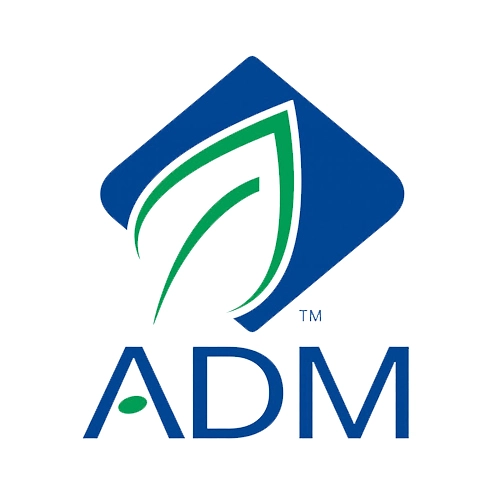
What Are Radar Speed Warning Signs?
As we journey down the highways and byways, we often encounter those silent sentinels watching over us from the sidelines. These aren’t your ordinary signs; they are radar speed warning signs—the unsung heroes of our roads, tirelessly ensuring our safety. This blog is your guide to uncovering the secrets of these electronic speed signs, discovering how they’re changing the way we drive, and building a unique connection between us and technology.
The Birth of Electronic Speed Signs
Back in the early 1970s, electronic speed signs made their first appearance in the United States. They were quite basic, having LED displays showing a driver’s speed, thanks to a radar gun built inside. Even though the technology was still quite new, it marked the start of a new phase in road safety. As time passed, engineers kept making them better. They added things like showing the speed limit, detecting when someone was speeding, and even recognizing pedestrians. Now, these electronic speed signs are an important part of our roads, saving lives and preventing accidents everywhere.
How Do Radar Speed Warning Signs Work?
But how do these high-tech electronic speed signs work their magic? Let’s take a peek under the hood. Radar speed warning signs use Doppler radar technology, emitting radio waves toward approaching vehicles. By analyzing the frequency shift of the reflected waves, the system accurately calculates a vehicle’s speed—sometimes with a margin of error as low as ±1 mph! This information then lights up on a large, easily readable screen, giving drivers time to adjust their speed and avoid potential hazards.
Some Advanced Features Include
Speed Limit Display: showing the current speed limit and reminding drivers to stay within legal boundaries.
Traffic Violation Detection: Identifying speeding drivers and triggering responses like flashing lights, sound alarms, or ticket dispensers (in some areas).
Pedestrian Detection: Using sensors to recognize pedestrians and cyclists, issuing alerts to drivers about their presence.
Real-Time Traffic Updates: Leveraging wireless connectivity to communicate with traffic management centers, sharing data on traffic flow, accidents, and road closures.
Smart Integration: Some cities have woven these signs into their smart city plans, using data analysis and machine learning to predict and respond to changing traffic patterns, optimize traffic flow, and minimize congestion.
Benefits of Radar Speed Warning Signs
Improved Road Safety: These signs encourage responsible driving habits, reduce speeding, and create a safer environment. Studies show they can cut speeding violations by up to 80% and reduce accidents by 20–40%.
Reduced Speeding Fines: By making drivers aware of their speed, these signs help them avoid fines and aggressive driving behaviors.
Better Traffic Flow: When drivers maintain steady speeds, traffic flows more smoothly. This means fewer traffic jams and shorter commute times for all of us.
Environmental Benefits: Improved traffic flow and reduced fuel consumption result in fewer emissions, contributing to a cleaner environment.
A Glimpse into the Future
Smart Technology: Future signs will use AI (artificial intelligence) and ML (machine learning) algorithms to analyze real-time traffic data, predict driver behavior, and offer personalized feedback.
Augmented Reality Displays: Signs may project AR visuals onto the road, providing real-time information about surroundings.
Vehicle-to-Everything Communication: Signs will communicate with other vehicles, bicycles, and pedestrians, improving situational awareness.
Autonomous Vehicle Integration: Signs will serve as nodes in an autonomous vehicle network, providing essential data.
Energy Harvesting: Future electronic speed signs may use solar panels, wind turbines, or special materials for sustainable energy.
Conclusion
Radar speed warning signs have come a long way since the 1970s. These signs have grown into sophisticated traffic managers, with the power to influence how we drive and, most importantly, make our roads safer. With ever-advancing technology, they’re on the path to becoming even more critical in the smart transportation systems of the future.
FAQ’s
Q.1 What are vehicle-activated speed warning signs?
Ans: Vehicle-activated speed warning signs are special road signs equipped with radar technology that detect the speed of approaching vehicles. When a vehicle exceeds the speed limit, these signs activate, flashing a warning to the driver, prompting them to slow down and adhere to the speed limit.
Q.2 What radar is overspeeding?
Ans: The radar used in overspeed detection is often referred to as Doppler radar technology. This radar sends out radio waves toward approaching vehicles, and by measuring the frequency shift of the reflected waves, it calculates the speed of the vehicle. When the calculated speed exceeds the predetermined limit, it triggers a warning or alert to notify the driver about overspeeding.
Q.3 What is the purpose of electronic speed signs?
Ans: Electronic speed signs serve the purpose of promoting safe and responsible driving. They display real-time speed information, encourage drivers to adhere to speed limits, reduce speeding violations, and ultimately enhance road safety. Additionally, they can collect traffic data for analysis, contributing to improved traffic management and infrastructure planning.
Q.4 What is the device for speed limit warning?
Ans: The device for speed limit warning is often an electronic speed sign equipped with radar technology. These signs are placed along the road and display the current speed limit, as well as provide real-time feedback to drivers who exceed the posted speed limit, thereby warning them to slow down.
Q.5 What does a speed alert mean?
Ans: A speed alert is a warning or notification that informs drivers when they are exceeding the designated speed limit. This alert can be delivered through various means, such as flashing lights on electronic speed signs or through in-vehicle systems that audibly or visually signal drivers to reduce their speed.
Q.6 What is an electronic speed limit?
Ans: An electronic speed limit refers to a dynamic speed limit that can be displayed on electronic speed signs. Unlike traditional, static speed limit signs, electronic speed limits can be adjusted in real time based on various factors like traffic conditions, weather, or time of day to improve road safety.
Q.7 What is radar in its full form?
Ans: Radio Detection And Ranging
Q.8 What are five situations where warning signs might be used?
Ans: Warning signs might be used in various situations to alert drivers about potential hazards or changes in road conditions. These include sharp curves, intersections, pedestrian crossings, school zones, construction zones, and other areas where drivers need to be cautious and adjust their driving behavior to ensure safety.





















